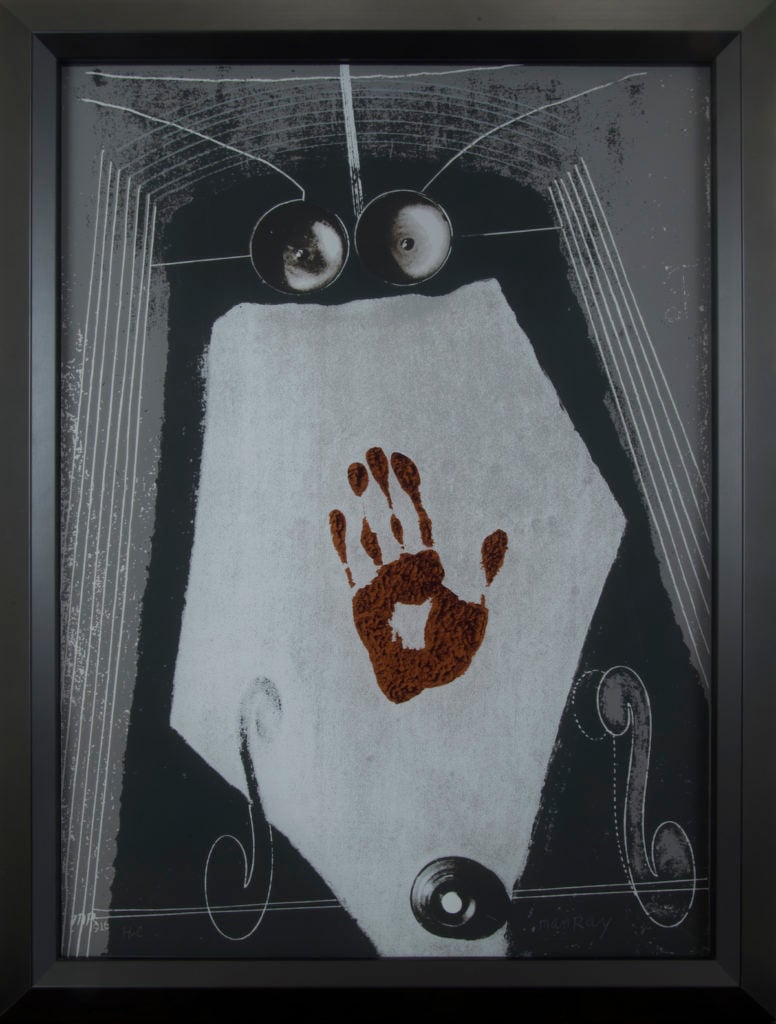Opinion
Man Ray’s Self-Portrait Takes Us Through the Looking Glass
THE DAILY PIC: At Feigen, Man Ray's 1970 self-portrait is a remake of a remake, printed front-to-back.

THE DAILY PIC: At Feigen, Man Ray's 1970 self-portrait is a remake of a remake, printed front-to-back.

Blake Gopnik

THE DAILY PIC (#1677): This self-portrait print by Man Ray, from 1970, is in the new show called “The Human Image: From Velazquez to Viola,” at Richard L. Feigen & Co in New York. The piece looks pretty straight-ahead, but in fact it has a very complex history.
It’s based on an original assemblage that Man Ray made way back in 1916, as one of the world’s first Dada objects – conceived before the term Dada was even coined. Man Ray described his piece as, “the butt of much joking. On a background of black and aluminum paint I attached two electric bells and a real push button. In the middle, I had simply put my hand on the palette and transferred the paint imprint as a signature. Everyone who pushed the button was disappointed that the bell did not ring.” That work was lost or destroyed, and for decades only survived in a famous photo the artist had taken of it. In 1963, he had the object remade (always a vexed business when it comes to Dada art), and then later turned that new work into the image that I’m showing today, silkscreened directly onto the back of a sheet of Plexiglas.
In 1970, silkscreening counted as a technique with a notable avant-garde pedigree, and I think Man Ray is extending that tradition. After all, to print on the back of Plexi, the normal order that the ink is laid down in would have to be reversed: The “last” layer, from a normal paper print, would have to go down first, followed by each of the “earlier” colors of ink, until the background of the image is reached.
Man Ray’s remade image of himself lives in a looking-glass world of reversals, hidden just beyond a shiny surface that we cannot breach.
For a full survey of past Daily Pics visit blakegopnik.com/archive.